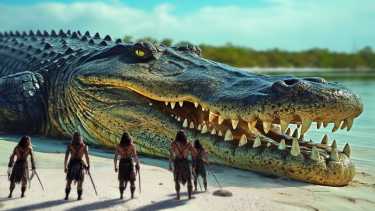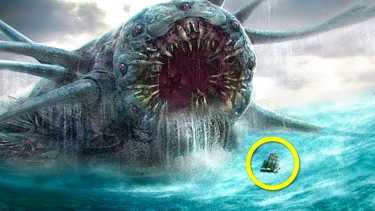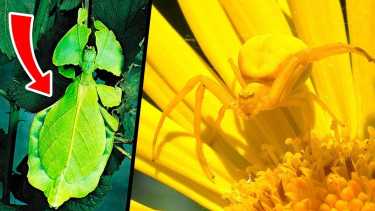The Power Of Numbers In The Animal Kingdom
Let's explore the power of numbers and cooperation in the animal kingdom!
AnimalsA single animal can get a lot done by itself. But for some, the more that work together, the better their chances of survival!
Whether it’s 100,000 birds teaming up to dodge a predator, 40 whales clubbing together to defeat the largest animal in existence, or just 2 different species helping each other out; when animals work together, not even the sky’s the limit! Strength and speed have their place. But, if you want real clout, it all comes down to the power of numbers in the animal kingdom!
STARLINGS WERE MEANT TO FLY
Once a year, starlings in Europe and North America make their long migration south for the winter. But at just 7-to-9 inches in size, the birds need each other to survive the journey. Why? Because, along the way, they’re vulnerable to attack from their vicious predators, peregrine falcons!
When faced with a hungry falcon, the flock’s defense depends on its strength in numbers. While one starling facing a falcon alone would be toast, in their thousands, or even hundreds of thousands, the tables are suddenly turned! Together, the starlings form a murmuration, where the birds all fly together in perfect sync.
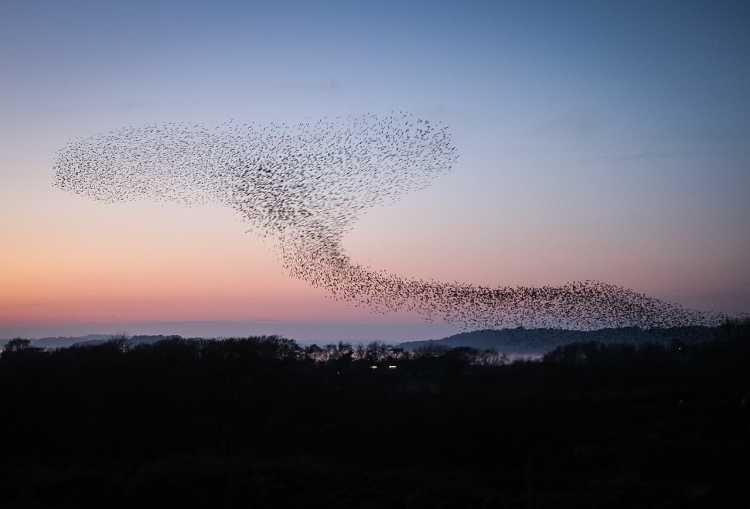
The result is nothing short of spectacular! And not only is it practically impossible for a predator to predict what they’ll do next, but these murmurations are able to move at speeds exceeding 90mph, adding to the predator’s bewilderment.
But how do they move together so closely and quickly without knocking into one another? Well, scientists believe each starling communicates with just a few other starlings nearby and follows their cues and copies their movements in a process known as ‘scale-free correlation’.
So, when one bird moves the others around it copy, like a pulse that ripples through the flock! But it’s not a fool proof way of avoiding predators. Falcons can launch a surprise offensive that dislodges a bird from the group.
The predator stands a much better chance against one bird it can track, as opposed to hundreds of thousands rolling over one another! But starlings have accounted for this too!
The starlings re-arrange the murmuration, so it's constantly unclear which birds are leading the group. With that, the falcon has no idea where the flock will move next, or which bird will be easiest to dislodge!
In their hundreds or thousands, these tiny birds can reverse their fate and overpower their predators! And we get one jaw-dropping visual effect!
BAND OF BUFFALOS
From the sky to the savannah, let's get acquainted with buffalos! On Africa’s wide, open plains, buffalos are in constant danger from the ecosystem’s apex predators: lions!
To protect themselves, buffalos club together; not in herds of 10, or even 100, but up to 1,000! With lion prides ranging from a measly 2 to 40 members, buffalos have the upper hand in terms of numbers and, therefore, power!
When traveling in large groups, buffalos are extremely difficult to take down. As the herd travels, the younger, weaker buffalos are protected in the middle of the group by an outer ring of stronger members.
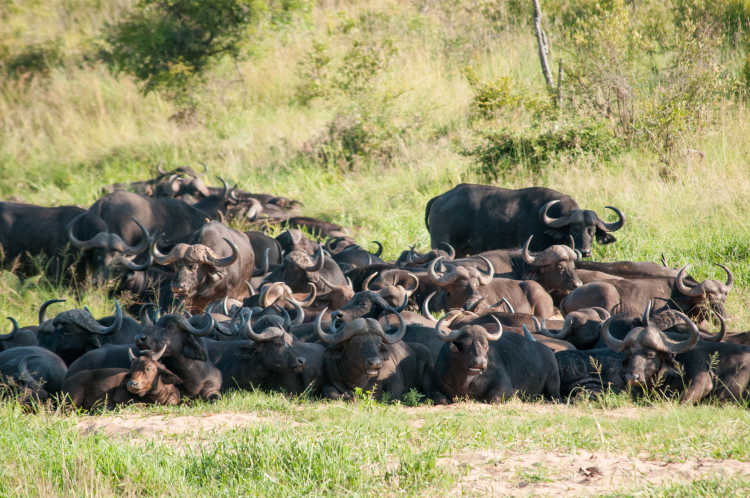
Together, the herd can cooperate to protect the weak, guarding the easier targets from surprise lion attacks. But they don’t just use their numbers for defense. Buffalo herds can go on the offensive, chasing down entire packs of lions, or even sneaking up on sleeping ones!
The buffalos club together and charge through the pack, dispersing the lions that wake up and trampling those that don’t! One on one, the lion may well have the advantage. But, when the whole herd charges, the lions rarely stand a chance! Even if a lion does succeed in taking a buffalo down, it can take nearly 30 mins to actually kill it.
Buffalos have extremely tough hides, making them much harder to pin down than most prey. But, when it comes to buffalos, if you attack one then you anger the whole herd! They may look tasty to a lion, but these animals definitely don’t make for an easy meal!
BAKING BEES
You’ve probably heard that if a honeybee uses it sting, it dies soon after. But that is not always the case! If a bee stings a mammal with fleshy skin, the barb of their stinger gets stuck, ripping out the bee's insides, bringing it to a grisly end.
But with insect predators, like spiders, the barb doesn’t get stuck, allowing the bee to deliver its venom through many painful stings. Though it’s rarely just one bee fighting back! Honeybees can live in hives with well over 60,000 other bees, and when one of them stings it releases an alarm pheromone, alerting other nearby bees that an intruder is in their midst.
This gives the bees a target, resulting in a pile on of angry bees furiously stinging and attacking the predator dumb enough to think it could take on an entire hive!
Although, that’s not the only way bees defend their homes. A subspecies known as the Japanese honeybee has developed a unique defense method that doesn’t involve their stingers.
Whenever they detect a predator, like a giant Asian hornet, the bees create a tight ball around them and frantically beat their wings. But they’re not trying to lift it into the air and drop it on the ground; they’re generating heat, and lots of it. The mass of their moving bodies turns into a 116°F oven, roasting the hornet alive!
But how do the bees survive in these superheated bee balls? Well, Japanese honeybees can survive in temperatures 5 to 9°F hotter than giant hornets. So, incredibly, they control the shared temperature of the bee ball, ensuring it doesn’t get too hot for them to handle, while roasting their enemy alive!
WHAT THE FLOCK
Any farmer will tell you that sheep are some of the dumbest animals on the planet! But when they band together in a flock, that can all change. In groups ranging from 5 to 500, sheep begin exhibiting what’s known as flock behavior!
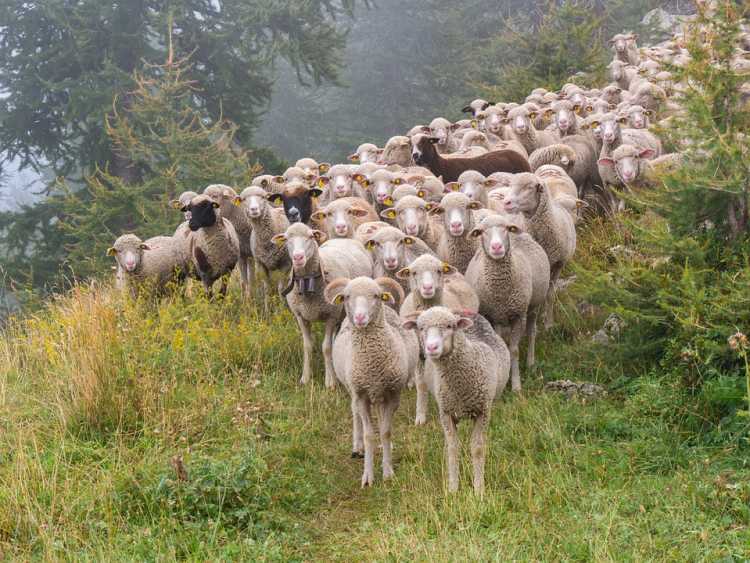
They’ll congregate close to one another, become stressed when separated from their flock members, and will inherently follow a leader. So, if one sheep starts to move, the rest will usually follow, no matter the size of the flock or the size of the gap they all need to get through!
But why do they do this? Well, sheep are a natural prey species without much in the way of defense, aside from their sheer numbers, which can overwhelm many predators. If a predator does attack the flock, the sheep will scram in different directions to confuse them.
When that happens, hundreds of sheep dramatically disperse! After scattering, they reform in a tight formation to ward off the threat. The result is a weirdly hypnotic drama, as the sheep stay together and race away from certain death!
FOLLOWING THE LEADER
Have you ever looked to the sky and seen birds flying in a V shape? If you have, there’s a good chance those birds were geese! In a formation of around 25 individual members, though sometimes more, geese work together to conserve their energy!
With each bird flying slightly above the bird in front, the geese can control the direction of wind resistance. Since the goose at the head of the formation experiences the most drag, the birds take it in turns to go in pole position, falling back when they get tired!
By working together, geese can fly for way longer, with most facing less wind resistance. So, what would happen if a goose migrated alone? Well, that’s what pelicans do! And the results aren’t ideal.
All by themselves against the wind, a single pelican is forced to beat its wings more often, causing strain and a higher heart rate. A gaggle of geese, on the other hand, exert less energy overall, so they can keep on trucking!
Not only that, but the V formation means the geese can ensure the whole group is together. When flying through difficult conditions, with the risk of a bird of prey swooping in at any time, the geese need to know who’s with them and who hasn’t made it!
And if you feel like you’ve noticed that shape somewhere else, it might be because fighter pilots travel in the same formation for this exact same reason!
FREE RIDERS
Usually, animals know having too many members in their group can be detrimental to their survival but not always! While mites and carrion beetles are adept at working together, sometimes the sheer number of mites can become overwhelming. The video below has an innacurate title and those are in fact mites on a beetle.
I wouldn’t blame you for thinking those mites were trying to kill that carrion beetle. But, what if I told you they were really just trying to get a free lift? Yeah, because carrion beetles lay their eggs in animal carcasses, the beetles have to compete with the deluge of fly eggs and maggots who often get there first.
One beetle alone can’t eat enough maggots and eggs to create space for its own larvae – so it brings the mites along, who eat the maggots, the fly eggs, and larva of anything that is not a carrion beetle! In exchange for making room, the mites get a free ride from carcass to carcass, and the relationship works out for everybody!
Well, unless they end up in a situation like the video above! If the sheer number of mites cashing in on a free beetle-ride gets too much, they’ll overwhelm their host, preventing it from being able to move! In enough numbers, the mite is mightier than we might have thought!
HAND-HOLDERS
There’s a lot to love about otters! Their most lovable feature, though, might just be the way they instinctively work together. Sea otter families contain up to 100 individuals but, it’s helpful for them to stay in an even number. That's because in order to stick together they have to hold hands!
Furthermore, sea otters rarely go on land, and will stay in the water unless they’re in real danger. Because of this, they need a way to stay together even when they’re asleep, so they lock paws whenever they take a nap to prevent each other from floating away!
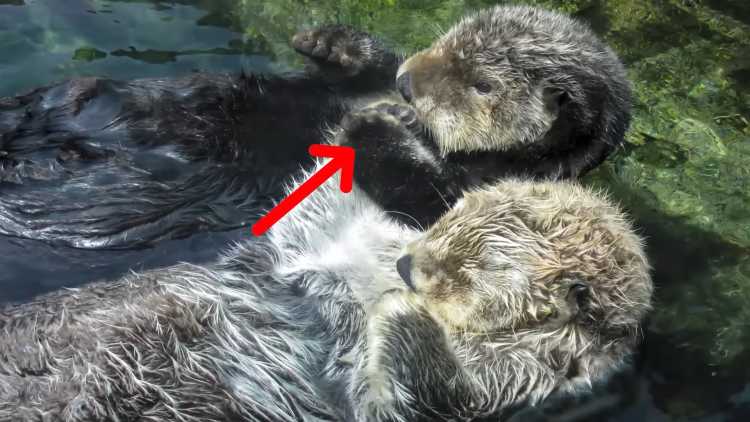
In some cases, a male otter will initiate handholding with female otters to literally keep hold of their mates. This communicates to the other otters that the female has already found her mating partner and that the male has control issues!
Clever as they are, this isn’t the only way otters have adapted to work together. Despite their small size, most otter species show immense bravery when confronted with a predator. That’s right: if the family is under attack, there’s nothing the group won’t do to see off the threat!
River otters have been known to kill alligators that come to their ponds looking for food. Or, in a fight they surely would have otherwise lost, Giant Otters have scared off jaguars by banding together and intimidating the big cat!
BIRDS OF A FEATHER
Guineafowl are ground birds found mostly in Sub-Saharan Africa and they understand the importance of working together to achieve their goals.
On a farm, guineafowl are at the mercy of roaming predators. The social birds, who thrive in groups of at least 6, work together to make an intimidating noise that scares the enemy away.
While alerting the rest of its flock, the guineafowl’s alarm also alerts other animals as well as farmers to an approaching danger such as a sly and slippery snake! These belly-crawlers are notoriously difficult to detect, especially when they blend into the surrounding grass.
Scarily, snakes kill at least 80,000 people every year, never mind guineafowl! But they’re not as vulnerable as they seem! In groups ranging roughly between 20 and 30, guineafowl have been known to surround small snakes less than a foot long, close ranks, and take turns pecking them to death!
The snake might be able to take on one or two, but it’s not got a chance of fighting off multiple mother-cluckers. Seems like these birds might be the perfect snake deterrent for any farmer, providing they can handle the screams!
DIFFERENT DENTISTRY
We’ve seen how animals can achieve power by banding together, but not all animal cooperation relies on numbers alone! Astonishingly, two animals with nothing in common, like the crocodile and Plover bird, can find a way to help each other out, through the medium of dentistry.
There’s nothing more annoying than getting things stuck in your teeth, something that affects humans and animals. But without a dentist or fingers, crocodiles need some help getting those annoying bits of food, debris, and even parasites out of their teeth.
And that’s where the Egyptian Plover bird comes in. Crocs will often keep their mouths open to avoid overheating, and while they do, the bird will fly onto the croc’s teeth and start picking out food! To the Plover, this is a nifty way to pick up a meal and, for the crocodile, it’s a convenient teeth cleaning!
A croc’s mouth can be prone to infections, so a visit from the Plover hygienist can help them out a bunch. The fact that this incredible carnivore doesn’t try to eat the Plover while it sits helplessly in its mouth just shows this apex predator’s appreciation or that bird’s bravery!
EELS & WRASSE
There are many things the moray eel can do that we humans can’t: smell out prey, produce toxin-laden mucus, and breathe underwater. But one thing these sea creatures can’t do is clean their teeth!
To get around this, moray eels team up with the ocean’s dentists: Bluestreak Cleaner wrasse! As the eels rhythmically open and close their mouths, these tiny fish travel inside the eel’s mouth and eat the parasites and dead tissue inside!
Together, both the eel and the wrasse benefit! The eel’s skin and teeth are kept clean and healthy, and the wrasse gets both a meal and protection from larger fish. In fact, wrasse value these relationships so much they don’t just stop at eels. The fishy fellas have been known to clean manta rays, groupers, and even barracudas!
So, if you’re afraid of the dentist, why not get a cleaner wrasse to help you out instead? Even though seeing a professional will always be better than sticking a tiny, helpless fish in your mouth!
KILLER KIN
A single Orca is a pretty intimidating sight. They’re also known as ‘killer whales’ for a reason! So, just imagine the threat posed by large pods of between 10 and 40 of these worrisome whales! On top of that, most orca pods stick together for their entire lives, giving the pod plenty of time to work on their coordination!
Once their next meal is found, orcas work together to isolate their prey in small groups. With all the pod there, they can chase, play with, and exhaust their prey until it's weak enough for them to stop fighting.
If there are 10 whales on the hunt, the energy is divided between the group. That means each individual whale is exerting far less energy than it would hunting alone!
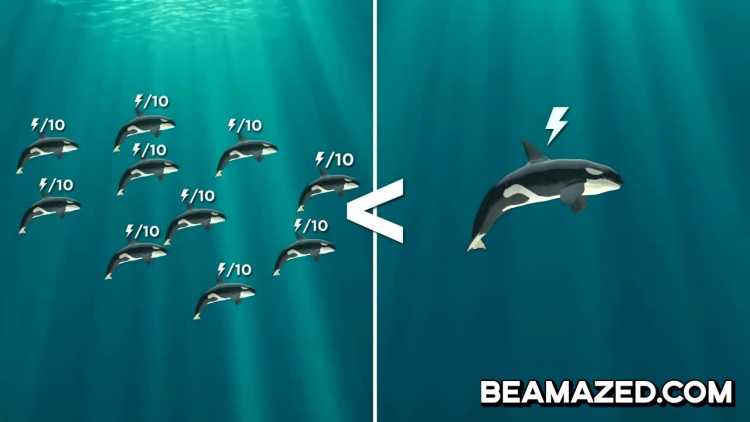
And the more orcas there are, the easier it is to surround the prey. This prevents the need for lengthy and tiring chases, helping the orcas save even more energy! But what’s scarier is that orcas are aware that they have more power when there’s more of them!
In fact, they can get so powerful that pods have been known to make meals out of a host of intimidating sea creatures like giant squids, dolphins, sperm whales, and even blue whales! Indeed, orcas have no problem taking on the largest animal on the planet, which can reach more than 100 ft long and weigh up to 200 tons!
But how do they hunt such large prey? Well, orcas will circle their target, making it more difficult for the animal to escape. They’ll also communicate underwater, using a complex system of audio calls!
This ensures every orca is exactly where they need to be, meaning any attack they make is a lethally coordinated scheme!
HUDDLE UP
In the harsh, 120mph Antarctic winds, with temperatures dropping as low as -58°F, Emperor Penguins have a tough job keeping warm. That’s why these hardy birds live in colonies with up to 10,000 others, not just for moral support, but for warmth!
To reserve their precious body heat while on land, Emperor penguins huddle together, backs to the wind, heads down, and share their collective body heat. In these huge numbers, penguins must stay tightly packed. If one penguin moves a single step, the entire group must also move to accommodate the open space and stay warm.
Research suggests they make small movements roughly every 30 to 60 seconds, traveling just 2 to 4 inches with each step! Over time, this leads to a large re-organization of the huddle, so those at the edge eventually get a turn to be super toasty in the middle.
In real time, it looks like the penguins are standing still. Not so interesting at first, but time-lapse footage tells a different story! When sped up, we see how the penguins are moving in waves! These waves move the group en masse and are instigated when a new penguin joins the huddle.
As cozy as it all looks, individual penguins will typically only spend around 50 minutes in the huddle. This is because temperatures inside can get really hot, up to 100°F, and there’s only so much the birds can take! So, if you can’t handle the heat, get out of the huddle!
CAPTURE COLLEAGUES
Now we’ve seen how prey animals can work together, but did you know predators can do the exact same thing? Take the coyote and the badger, for example. When these two predators come across one another, they don’t fight it out. Instead, they work together, doubling their hunting power!
But here’s the curious thing; coyotes are solitary creatures most of the time, either living alone or in loose family groups. The benefit in teaming up with a badger is so, when hunting elusive burrowing prey, the coyote rules the above-ground areas while, underground, the badger reigns supreme.
While on the hunt, the coyote will chase the prey on the ground-level, with the badger poised to take over should it head underground.
Say the prey is a burrow animal, like a ground squirrel; coyotes working with badgers catch a third more squirrels than coyotes going it alone. But this doesn’t necessarily mean that the two animals like each other.
They’re still in competition for the same meal! However, the two-conserve energy when they split the work between them! That means less work for more food and a win-win situation!
DOLPHIN DANGER
There is no creature more feared in the entire ocean than a shark. Whoever you are, fish or friend, if a shark sets its jaws on you, you’re headed straight for a watery grave! That is, unless you’re a bottlenose dolphin.
In the past, dolphins have been known to kill sharks. And, while a dolphin could never do this alone, in pods of around 20, they can mount a very powerful attack! Though it’s no easy task.

Some species of sharks, like great whites, can grow up to 21 ft long and have resilient, sandpaper-like skin that only teeth as sharp as theirs could penetrate. Comparatively, bottlenose dolphins can only grow about 12 ft long, and their soft skin can be punctured easily. But the advantage that dolphins have is in their agility, speed, and pod size!
While sharks are comparatively slow and solitary hunters, dolphins are nimble, social animals who all swim to a group member’s defense should a shark attack.
Dolphin snouts are made of thick bone with a blunt finish, which can deal a hard, ramming blow to the shark, especially to the shark’s soft underbelly. Even if this doesn’t fatally injure the shark, these repeated blows can be enough to make it think twice about targeting the pod!
BUBBLES & BELLA
We’ve seen animals all over the world forced to rely on each other for survival. But you know what would really melt my heart? If two animals, from different species, had somehow formed a close friendship!
Meet Bubbles, an African elephant and Bella, a black Labrador. Both are residents of Myrtle Beach Safari in South Carolina and have become the best of friends over time! The two can often be seen playing with each other in the water. Bubbles will throw a ball with her trunk, while Bella jumps off the back of Bubbles and swims to retrieve the ball!
Bubbles is originally from Africa, but came to the sanctuary in 1983 after her parents were both killed by poachers for their ivory tusks. She was well cared for, and even appeared on the silver screen in “Ace Ventura: When Nature Calls”!
But in 2007 a contractor, who the sanctuary had hired to build a pool, abandoned his black Labrador puppy there. Instead of pining for her owner though, she formed an unlikely but incredibly close bond with Bubbles through their shared love of aquatic antics!
And to this day, the dynamic duo are utterly inseparable probably because it’s really handy having a friend who also doubles up as a diving board!





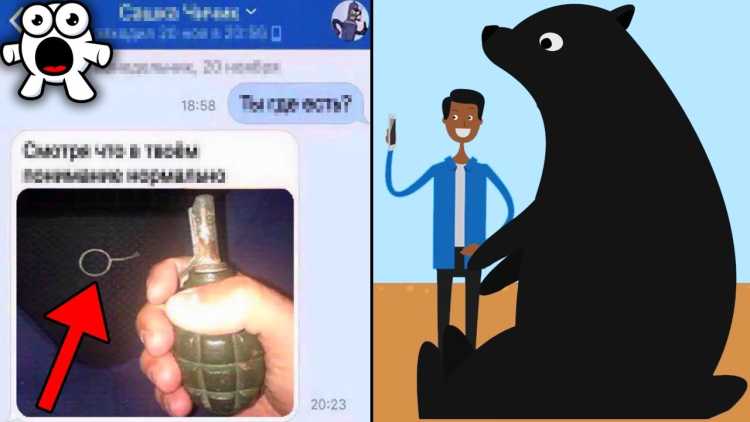

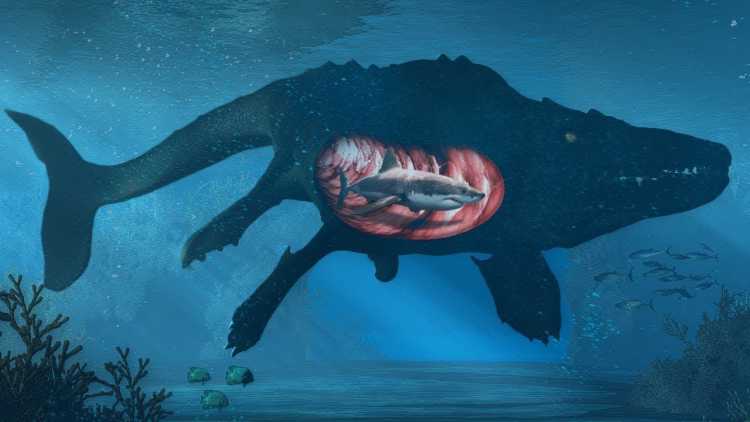




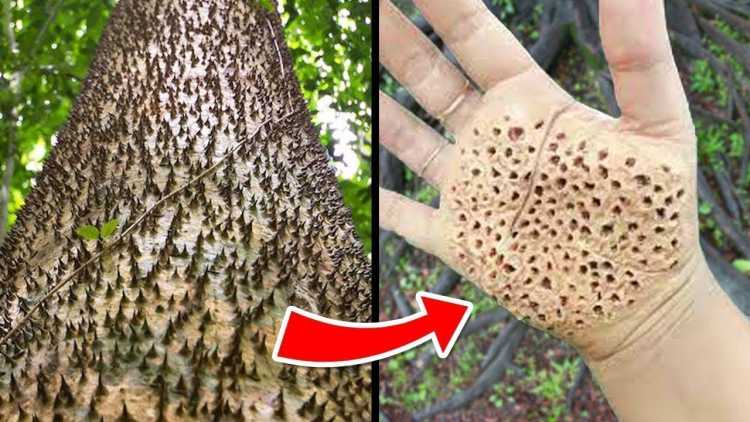

![Embarrassingly Dumb Ways People Died - Darwin Awards Winners [Part 14]](http://images.ctfassets.net/l031eph9pzsg/686De1sLP59fCNWLkbDwm5/4031ad820164610867ececf9513ce5ce/embarrassingly-dumb-ways-people-died---darwin-awards-winners-_part-14_.jpg?w=750&h=422&fl=progressive&q=50&fm=jpg)
